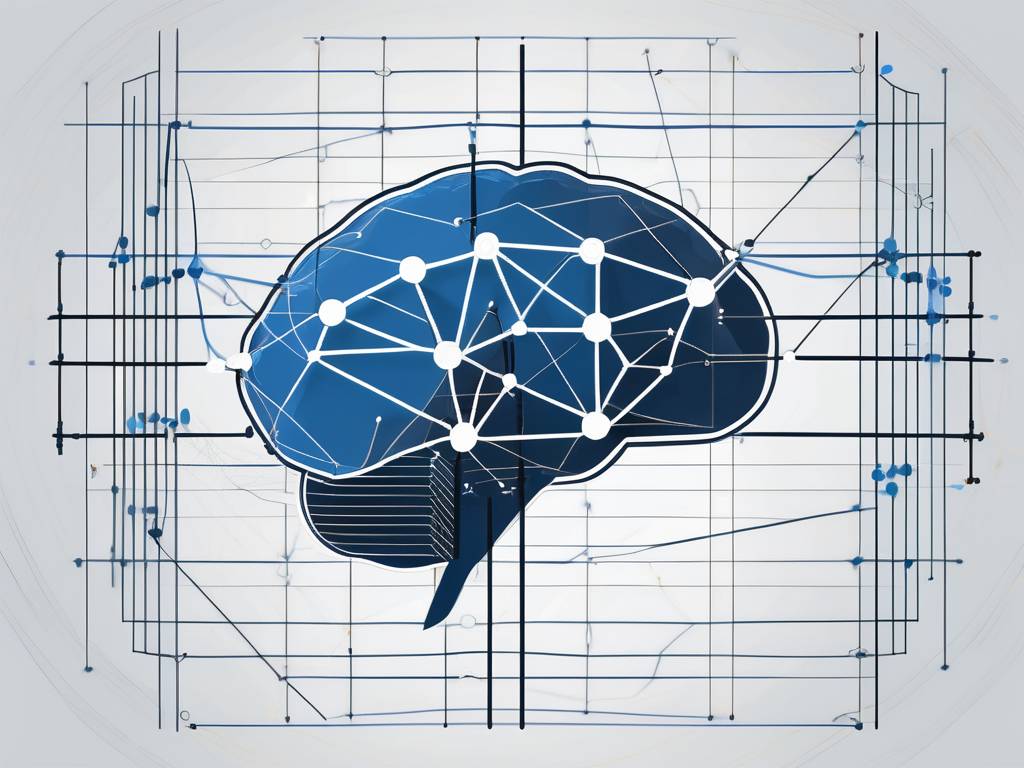Unsupervised Learning: Machine Learning Explained
In the domain of machine learning, the three primary approaches are unsupervised, supervised, and reinforcement learning. Unsupervised learning algorithms excel at discovering patterns in datasets without the need for predefined labels for the input data. This article will cover the basics of unsupervised learning, exploring its methodologies, applications, and the groundbreaking potential it holds for the future of technology and AI.
Unsupervised vs. Supervised Learning
Unsupervised and supervised learning represent two foundational approaches in the field of machine learning, each with its distinct methodologies, applications, and goals. Understanding the differences between these two approaches is crucial for understanding artificial intelligence and machine learning.
Unsupervised Learning
In unsupervised learning, algorithms are developed to identify patterns, relationships, or structures in datasets that are not labeled—meaning each piece of input data does not come with a corresponding output label. The primary objective is for the algorithm to uncover inherent groupings, correlations, or features within the data, based on the input alone. Without explicit outcomes to guide the learning process, the model relies on the data’s natural characteristics to infer the underlying structure.
Consider the task of organizing a collection of pet images into distinct categories without prior knowledge of what these categories might be. In this scenario, an unsupervised learning algorithm processes the dataset, analyzing visual features such as fur color and animal size. Without being told what to look for, the algorithm might identify clusters of images that share similar attributes—effectively clustering together all images of birds, all images of dogs, all images of rodents, and other distinct groups of pets. The result is a model that can segment and organize data into meaningful groups, unveiling insights into the dataset’s inherent structure.
Supervised Learning Models
In supervised machine learning, algorithms are trained using a labeled dataset, in which every piece of input data is paired with a corresponding output label. This process aims for the algorithm to learn the mapping or relationship between the input data and its associated labels. Once trained on labeled training data, the model is equipped to make predictions or classifications on new, previously unseen data.
Consider the process of training a supervised learning algorithm to distinguish between images of cats and dogs. In this scenario, the training dataset is carefully curated, with each image explicitly labeled as “cat” or “dog.” This labeling allows the algorithm to analyze the visual characteristics associated with each category. Through this training, the algorithm learns to recognize patterns—such as the shape of ears, the size of the animal, or the texture of fur—that differentiate cats from dogs. As a result, once the training phase is complete, the model is equipped to applying these learned patterns to accurately classify new, unseen images as either cats or dogs.
Key Differences
| Unsupervised | Supervised | |
| Definition | Learning from unlabeled data to identify patterns and structures in the data. | Learning from labeled data to predict outcomes for new data. |
| Data Used | Unlabeled data (only inputs). | Labeled data (input-output pairs). |
| Algorithms | Clustering (K-Means), Dimensionality Reduction (PCA), Association (Apriori). | Regression (Linear Regression), Classification (Decision Trees, SVMs). |
| Goal | Discover the underlying patterns and structure of the data. | Learn a mapping from inputs to outputs. |
| Outcome | A model that can identify patterns, groups, or dimensions within the data. | A model that can make predictions or decisions based on new inputs. |
| Use Cases | Market basket analysis, anomaly detection, customer segmenting. | Email spam filtering, image recognition, sales forecasting. |
| Evaluation | More challenging due to the lack of labeled data, use metrics like silhouette score. | Clearer, use accuracy, precision, recall, F1 Score, etc., based on the comparison to true labels. |
Types of Unsupervised Learning
Unsupervised learning can be divided into two types of problems: clustering and association. Each of these types of unsupervised learning plays a crucial role in the analysis of complex data, enabling the extraction of patterns, relationships, and structures that may not be immediately apparent. They are particularly useful in scenarios where manually labeling data is impractical or impossible.
Clustering
Clustering is an unsupervised machine learning technique that involves the grouping of data points. Within a dataset, a clustering algorithm categorizes each point into a specific group (a cluster). In theory, data points that are in the same group should have similar properties and/or features, while data points in different groups should have highly dissimilar properties and/or features.
Clustering is a widely utilized technique for statistical data analysis across various fields. In data mining, K-Means clustering is a method of vector quantization that aims to divide n observations into k distinct clusters. Each observation is assigned to the cluster whose mean (centroid) is nearest to it, with the mean acting as a representative prototype of the cluster. The objective of this method is to ensure that observations within each cluster are as similar as possible, while maximizing the dissimilarity between the clusters themselves.
Association
On the other hand, association is a rule-based machine learning method for discovering relationships, patterns, associations, or causal structures among large sets of items in transactional or relational databases. They are particularly useful in the context of market basket analysis, where the goal is to find associations between the different items that customers buy. However, their application extends beyond market analysis to any domain requiring the discovery of patterns in large datasets. There are three common ways to measure association: support, confidence and lift.
Support
Support indicates the frequency or the proportion of transactions in the dataset that contain a particular itemset. It helps in identifying the most common items or itemsets within the dataset.
The formula to calculate support for an itemset A is:
Confidence
Confidence measures the likelihood that an item Y is purchased when another item X has already been purchased. This measure gives us an idea of how strong the association is between two items.
The formula for confidence of a rule {X -> Y} is:
Lift
Lift measures how much more likely item Y is purchased when item X is purchased, while controlling for the popularity of Y. It helps in understanding the strength of any rule over the baseline popularity of Y. A lift value greater than 1 indicates that Y is more likely to be bought with X, while a value less than 1 indicates that Y is less likely to be bought with X.
The lift of a rule {X -> Y} is calculated as:
Applications of Unsupervised Learning
Unsupervised learning has numerous applications spanning various domains, learn more about the real-world applications of unsupervised learning models below.
Clustering
Businesses frequently leverage clustering for customer segmentation, the process of dividing a customer base into groups or segments based on common characteristics, behaviors, or preferences. This approach is crucial for tailoring marketing strategies, product development, and customer service to meet the needs of different segments.
Social media and networking platforms use clustering to identify communities by analyzing patterns of interactions, shared interests, and other relational data. This analysis reveals broad social structures, highlighting influential individuals and niche groups within the larger network. These insights are crucial for understanding the spread of information across networks, community formation, and the dynamics of user interaction.
Clustering algorithms are also utilized by search engines to improve how search results are presented to users. By grouping similar results together based on content, themes, or metadata, clustering helps search engines make it easier for users to find relevant information and explore related topics. This approach enhances user experiences, reveals deeper connections between different pieces of content, and improves search relevance and efficiency.
Anomaly Detection
Anomaly detection is an important application of unsupervised learning where the objective is to identify unusual data points or patterns that deviate from expected behavior in a dataset. For example, credit card companies utilize anomaly detection to identify patterns that deviate from typical spending behaviors, which could indicate fraudulent transactions. Manufacturing companies use this technique to detect abnormal machine behavior, preventing failures and reducing costly downtimes while maintaining operational efficiency. In healthcare, providers use anomaly detection to monitor patients’ vitals and predict critical events by detecting outlying readings that might signal a medical emergency.
Market Basket Analysis
Market basket analysis illustrates the power of unsupervised learning in a retail context, where it’s used to identify products that frequently co-occur in shopping baskets. This insight allows retailers to devise effective cross-selling strategies that can enhance customer satisfaction and increase sales. For instance, discovering that customers who buy bread often also buy butter can lead retailers to place these items closer together in the store or bundle them in promotions, optimizing shopping experience and boosting sales.
Visualization
Visualization is a powerful application of unsupervised learning used to understand and interpret complex datasets. By reducing high-dimensional data to two or three dimensions, visualization techniques enable us to visually inspect the structure and patterns in the data. This is particularly useful in exploratory data analysis when the goals is to uncover the underlying structure of the data.
Common visualization techniques include Principal Component Analysis (PCA) and t-Distributed Stochastic Neighbor Embedding (t-SNE). PCA is a linear dimensionality reduction technique that extracts information from high-dimensional spaces by projecting it onto a lower-dimensional subspace, preserving as much variance as possible. On the other hand, t-SNE is a non-linear technique that models small pairwise distances or similarities, which makes it particularly effective at capturing local structures in the data and revealing clusters.
Challenges in Unsupervised Learning
While unsupervised learning can significantly impact a business, it presents unique and complex challenges that must be addressed to maximize its potential.
Data Quality & Preparation
Unsupervised learning is highly sensitive to data quality. Issues such as missing values, noise, and irrelevant features can significantly affect the outcomes of unsupervised learning algorithms. Consequently, cleaning and preparing data becomes a crucial and often resource-intensive task.
Quality Assessment
Interpreting and evaluating the outputs from unsupervised learning models can be challenging because their results are often complex and ambiguous. In supervised learning, there’s a clear standard or “ground truth” to compare against, but unsupervised learning lacks this, making it hard to tell if the identified patterns and relationships are significant or just random noise. Additionally, understanding the reasoning behind grouping of items into clusters may not be straightforward without specific domain knowledge, which makes it difficult to justify decisions based on these findings.
A common method to tackle this issue is employing internal evaluation metrics, such as the silhouette score and the Davies-Bouldin index, to measure the quality of clustering results without external labels. However, these metrics have limitations and should be used cautiously.
Data Security & Privacy
When working with unsupervised data, it’s crucial to ensure that sensitive information is not inadvertently exposed through the patterns identified by unsupervised learning algorithms. This is particularly important in industries like healthcare or finance, where data privacy is paramount.
Computational Cost
Unsupervised learning algorithms often involve complex optimization problems that can be computationally expensive. This is particularly true for methods like hierarchical clustering, which can have a computational complexity of O(n3), where n is the number of data points.
One approach to address this challenge is to use more efficient algorithms, such as K-Means or DBSCAN, which have a computational complexity of O(n). Another approach is to use dimensionality reduction techniques to reduce the size of the dataset before applying the clustering algorithm. However, these approaches come with their own trade-offs and should be chosen based on the specific requirements of the task at hand.
Conclusion
Unsupervised learning is a key category of machine learning. It offers significant advantages in situations where labeled data is scarce or unavailable and can uncover hidden patterns and relationships in the data that may not be apparent through supervised learning techniques.
As we continue to generate more and more data, the importance of unsupervised learning is likely to increase. Future research in this field will likely focus on developing more efficient algorithms, as well as better methods for assessing the quality of the results. With these advancements, unsupervised learning will continue to play a crucial role in our ability to understand and make sense of the world around us.
Questions?
-
What is unsupervised learning in machine learning?Toggle questionUnsupervised learning is a type of machine learning where the algorithm is given data without explicit instructions on what to do with it. The system tries to learn the patterns and the structure from the data without labeled responses.
-
How does unsupervised learning differ from supervised learning?Toggle questionIn supervised learning, the algorithm is trained on a labeled dataset with known outcomes, while in unsupervised learning, the algorithm works with unlabeled data, seeking to identify patterns, relationships, or groupings on its own.
-
What are the main types of unsupervised learning algorithms?Toggle questionThe main types of unsupervised learning algorithms include clustering algorithms, which group similar data points together, and association algorithms, which identify patterns and relationships in the data.
-
What is a real-world example of unsupervised learning?Toggle questionA real-world example of unsupervised learning is market basket analysis, where association algorithms are used to identify patterns in customer purchasing behavior. This helps retailers understand which products are often bought together, informing strategies like product placement and marketing.
-
What challenges are associated with unsupervised learning?Toggle questionThe challenges of unsupervised learning include the lack of labeled data for training, making it harder to evaluate the accuracy of the model. Additionally, selecting the right algorithm and determining the optimal number of clusters can be challenging.
-
What industries benefit from unsupervised learning applications?Toggle questionIndustries such as finance (for fraud detection), healthcare (for patient segmentation), and marketing (for customer segmentation) benefit from unsupervised learning applications. It is also widely used in data preprocessing before supervised learning tasks.
-
Can you give an example of how unsupervised learning is applied in natural language processing?Toggle questionIn NLP, unsupervised learning is crucial for discovering patterns and insights from data without prior labeling. Topic modeling is a prime example where an unsupervised machine learning model, such as Latent Dirichlet Allocation, identifies prevalent themes across a collection of documents by analyzing recurrent word patterns at each data point. This process effectively reveals the main topics embedded within large text corpora, offering insights into the thematic structure of the data.

 hello@westlink.com
hello@westlink.com  (866) 954-6533
(866) 954-6533  700 N Colorado Blvd,
700 N Colorado Blvd,







Comments